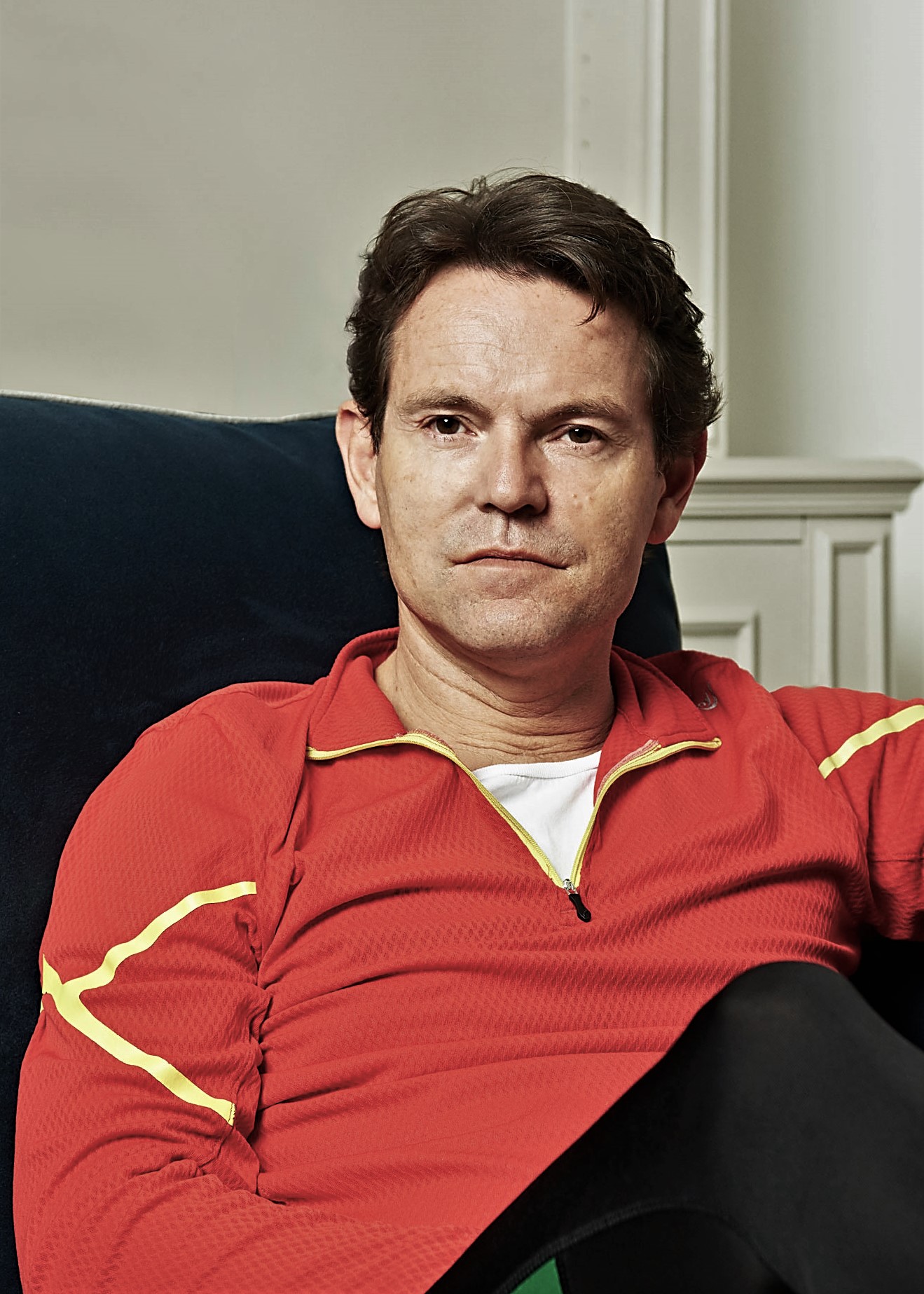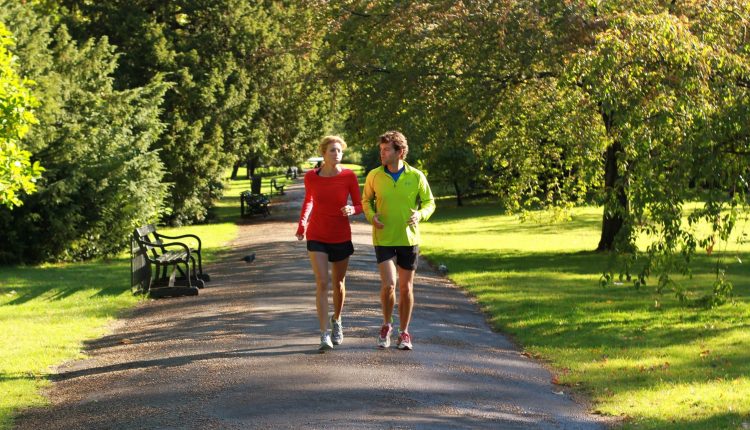Dynamic Running Therapy
William Pullen is a London psychotherapist who offers his clients “Dynamic Running Therapy” or DRT. It is a therapeutic method for confronting difficult feelings and circumstances in your life through movement. We spoke to William to explore his personal experiences and how the technique is being applied
Have exercise and running always been a major part of your life?
I played some sports as a young man but I certainly wasn’t a runner. In my 30s I was in reasonable condition as I was involved in military fitness sessions, but I was also a smoker and a drinker. My introduction to running was a result of my own mental health struggles.
I had a tough relationship break-up around the age of 40 which was rather devastating for me and I fell into depression. I suffered from all the symptoms that you associate with depression: isolation, fear, anxiety and lethargy. I found it very hard to action anything.
What treatment steps did you take for your depression?
 The first stage was reluctantly accepting the anti-depressants that my doctor recommended. The medication gave me the ability to start making some rational choices and more importantly to take action on them. It gave me a determination to finally start doing something. I knew that if I started getting outside and moving in any way, I would make progress.
The first stage was reluctantly accepting the anti-depressants that my doctor recommended. The medication gave me the ability to start making some rational choices and more importantly to take action on them. It gave me a determination to finally start doing something. I knew that if I started getting outside and moving in any way, I would make progress.
I settled on running which is a popular choice as anyone can run. I rang an old friend who was also experiencing troubles in his life. We started walking together and slowly sharing our problems. Eventually the walking increased to steady running and it is there that I noticed how powerful running was.
In recovery it is so important to get outside, get fresh air and see people, so through our sessions we were ticking a lot of those important boxes. It gave me a sense that I was intervening in my own future. I knew the more I ran and the more I talked, the better I felt. I no longer felt passive and a victim of circumstance.
Do you feel you would have got to that position without anti-depressants?
I like to think so, but I suspect anti-depressants got me to the stage of taking action a lot quicker.
So how did Dynamic Running Therapy evolve from that point?
I was working in television at the time which I realised was not benefitting my mental health, so I stopped and retrained in psychotherapy. I’ve always been interested in psychology and this enabled me to bring together everything I have learned about moving and running combined with the different theories and techniques within psychotherapy. I wanted to bring in elements of biochemistry, anthropology and the more recent research into the impact of green and open spaces on stress levels.
Dynamic Running Therapy is something I developed about a year into setting up my practice. It is not the only therapy technique I offer, I decide with the client whether it is suitable for them and often they have an idea of what techniques they wish to explore before they see me.
What are the key principles of DRT?
Essentially it is person centred humanistic psychotherapy which can also be combined with mindfulness. It is client led which is really important – the client is in possession of the answers themselves, we are on a journey together to reach those answers. In DRT, this is a mental and emotional journey but supported by a physical journey which I believe enhances the impact and effectiveness of the process.
They will decide how far and how fast they want to run in the session, they never feel they are racing or trying to keep up with me. I can notice how their speed increases or decreases according to what they are talking about. The change in their speed will often be related to the emotion of what they are tapping into. It provides communication in a whole other way through using the body.

Is a key benefit the ability for the client to align a physical journey with an emotional journey?
Absolutely. As you feel and see yourself go from point A to point B you sense that you are making progress in life. You now feel like a person that has just achieved something and so believe you can also make progress in your emotional life.
I believe the therapeutic alliance between therapist and patient is enhanced when we incorporate movement into the relationship. It takes a few sessions to establish trust, but I think that happens faster when we are outside. There is something intimate about moving our bodies together. The togetherness feels stronger when you are no longer face to face in a room, worrying about what facial expressions to give off or trying to interpret my reactions.
It also impacts the power dynamic as they now see me take every single step they take. We may not be on the same journey together, but for those moments we are on the same path.
Is this a technique you could apply on your own?
Absolutely. I have an app being developed which enables you to listen to questions from me as you are running. In my latest book “Run For Your Life” there is a note taking section at the end of each chapter for documenting your experiences. It’s obviously not quite the same as therapy itself and may work for some people and not others, but that is the same for all therapy.

Has DRT evolved and adapted since you first developed it?
The principles behind it are essentially the same although the application has evolved. The book provides a structure to apply these principles but of course I don’t rely on the set line of questioning from the book when I am with a client. I will adapt according to the client’s needs and our pathway.
A key aspect is how you relate to yourself through learning, acknowledgement and then acceptance. In particular, accepting that some things can just be lived with. Anxiety is a good example as an element of anxiety is created by the expectation that you should have no anxiety. We try to examine that expectation in the hope that we can develop a different perspective and therefore lifestyle. Sometimes we can’t change our jobs or our relationships immediately but we can develop something new that gives us a sense of meaning and purpose.
Clearly you see a positive change in people from this technique.
Absolutely, it is a very empowering and positive process. I really believe that the combination of running together, walking together and talking together provides a process of healing. You may have experienced a similar pattern when sitting alongside someone on a bus or on a roadtrip and you find them telling you their life-story. The journey enables us to put our emotions and stories into words in a way that just sitting face to face doesn’t always do. Normal therapy can be quite traumatising as you are asking the client to go over and over a very emotional subject often in a small enclosed environment.
Our brain chemistry is not set up for us to be sat in concrete boxes for hours on end. We are designed to be social creatures, who are interacting and moving in outside spaces.
How do you feel people can find the strength to pursue a more active lifestyle.
I appreciate it can be extremely difficult if you don’t already have a sport or sporting community to go back to. To maintain motivation you need to find something that is fun and provides group support. Anything you can do with a friend is fantastic, perhaps just start by walking then slowly increase to running. Then grab your courage and join a running club.
It doesn’t matter how fit or out of shape you are. It all starts with a single step and then keep moving. You will get somewhere, it may not be where you thought you would end up, but it will be somewhere new.

